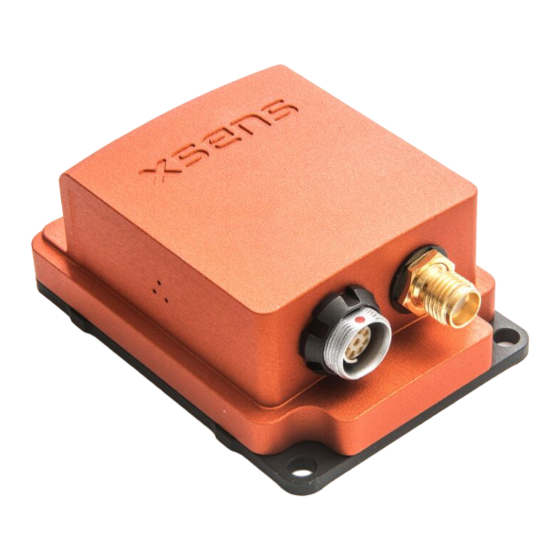
Xsens MTi-30 AHRS User Manual
Mti 10-series and mti 100-series 5th generation
Hide thumbs
Also See for MTi-30 AHRS:
- Reference manual (31 pages) ,
- User manual (84 pages) ,
- User manual (61 pages)
Table of Contents
Advertisement
Quick Links
Xsens Technologies B.V.
Pantheon 6a
phone
P.O. Box 559
fax
7500 AN Enschede
e-mail
The Netherlands
internet
MTi 10-series and MTi 100-series
Document MT0605P, Revision F, 29 October 2018
Xsens North America, Inc.
+31 (0)88 973 67 00
10557 Jefferson Blvd,
+31 (0)88 973 67 01
Suite C
info@xsens.com
CA-90232 Culver City
www.xsens.com
USA
MTi User Manual
5th generation
phone
fax
e-mail
internet
310-481-1800
310-416-9044
info@xsens.com
www.xsens.com
Advertisement
Table of Contents






Need help?
Do you have a question about the MTi-30 AHRS and is the answer not in the manual?
Questions and answers